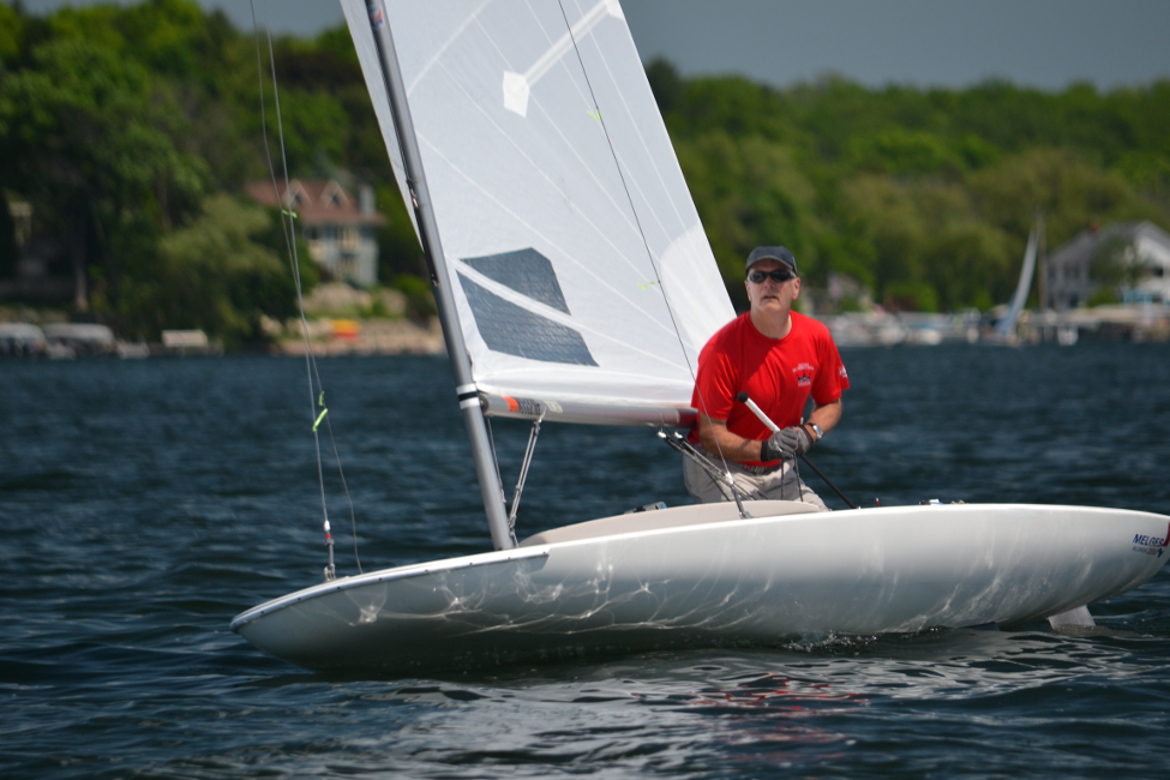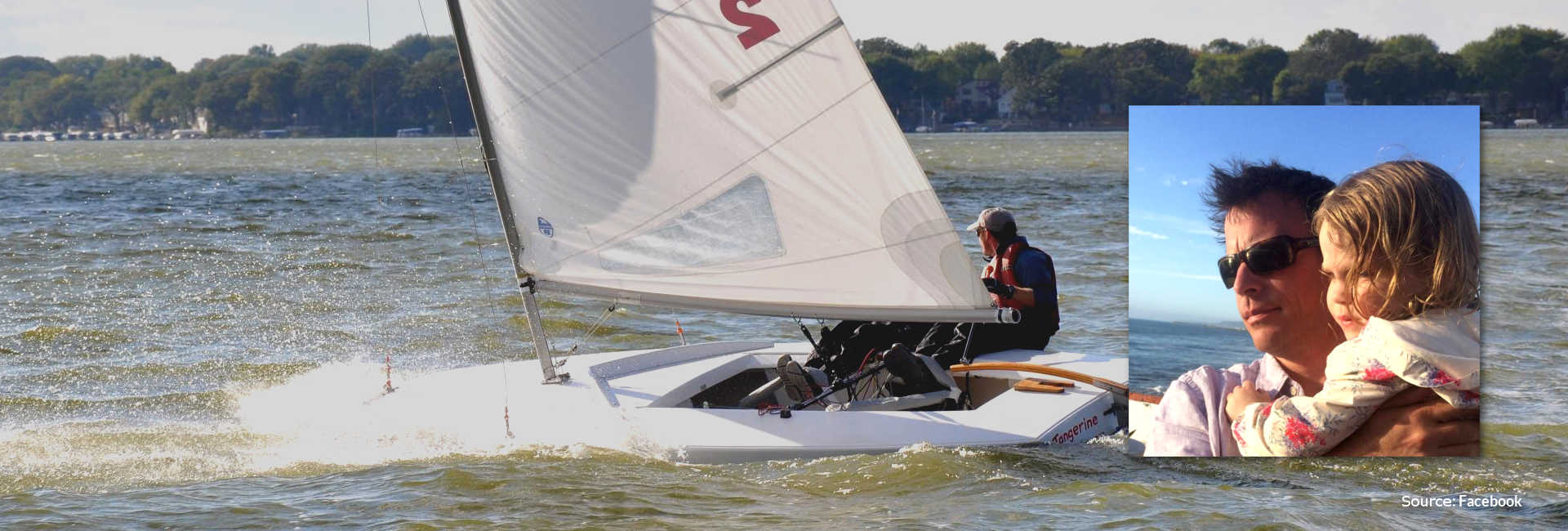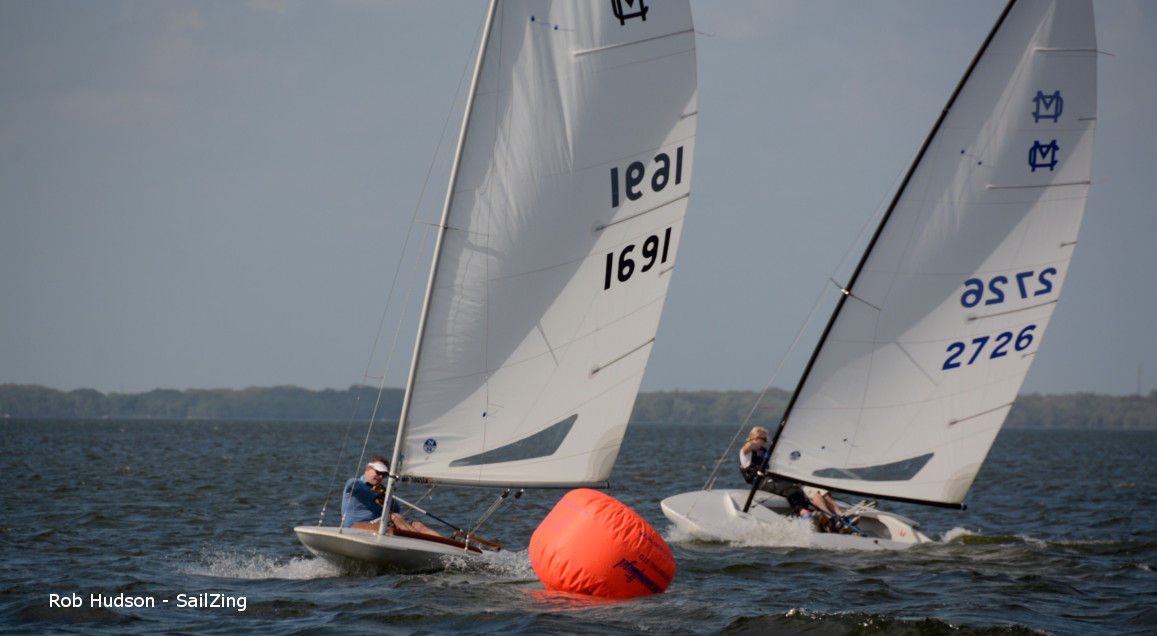Well, while one SailZinger was PRO for the race, the other was sailing to a win in the MC-Scow. The wind was very gusty so I had to use some of the learning that we’ve shared on SailZing.com to finish first.
- Start on the line in clear air with room to bear off and gain speed. Starboard was a bit favored. I was at the boat end but had an MC-Scow in front of me and a pile of boats below. I started to get worried that I would end up in the second row at the gun. The breeze was strong enough, that I reasoned that everyone would have trouble holding their spot, so let them slide. They did. That opened my spot at the boat with room to bear off. At the gun, I had speed and clear air to windward and rolled over the pile below me.
- Work to maintain a constant heel. The gusty breeze made it a battle and I’m 5’6″ and not as hefty as some in the race, so I had to depower. I used plenty of Cunningham and some vang and then eased aggressively when the puffs hit. The wind was hitting the water, so you could see them coming and anticipate.
Melges Tuning Guide Excerpt:
MAINSHEET TRIM
You can trim harder in these conditions so long as you can hold your boat down. Once you become overpowered in this wind range you must begin to ease your mainsheet in the puffs. You never want the boat to overheel. When the boat does heel up you must have boom vang on so that the sail remains flat as you ease the sail. In this condition you should sail off the angle of heel. Meaning, if you have to ease your mainsheet a foot in order to help hold the boat down then do this. The worst thing you can do is trim hard, overheel and then stuff the boat into the wind. By easing the mainsail you are able to sail at a ‘fast angle’ –not stuffed into the breeze. The boat will accelerate and begin to build speed. Never cleat your mainsail. Constant angle of heel translates into constant fast speed.RELATED CONTENT: Melges Tuning Guide, Boat Speed
- Limit rudder action. I tried to think about this regularly. Use the sail, not the rudder to manage the puffs. I did point up in the breeze if I had speed, but no excessive rudder action.
- Watch your sail telltales. I could have done more of this, but occasionally when the boat seemed to be slowing, I would take a cue from the telltales for wind flow.
- Downwind strategy: sail up in the lulls and down in the puffs. There were wind streaks, so I tried to sail down in them and then point up to maintain speed in the lulls to cross to the next one. Worked well.
- Late in the race, protect your position. Jeff Lippert and I were almost even at the last leeward gate. I chose the right buoy at the gate and he went left. When I noticed Jeff tacking back to my side and leeward of me, I knew that I needed to stay between him and the finish line this late in the race. I had a little help when a C-Scow sat on Jeff. Jeff is skilled at evading covering duels, so I lucked out. When that happened, I focused on sailing fast to the line.
I still have a lot of work to do and this was a Wednesday race, but I did get to try some of the tips that we’ve gathered at SailZing.com and they paid off with a win.
Sailors Helping Sailors
Will you share your knowledge with your related Comments below?





